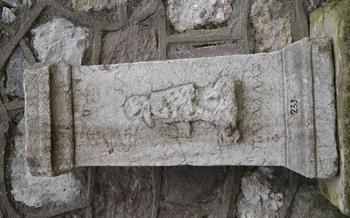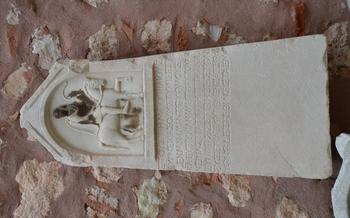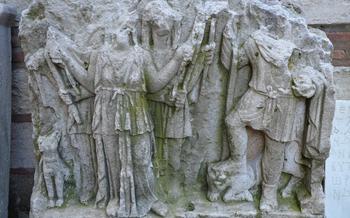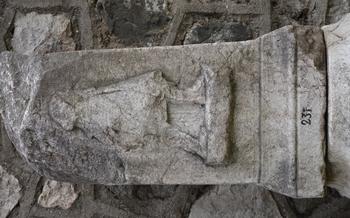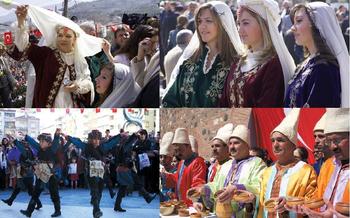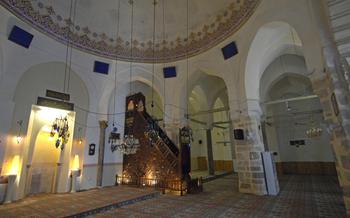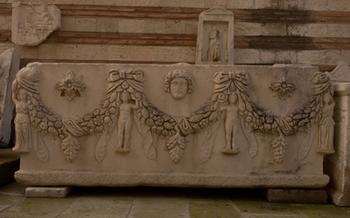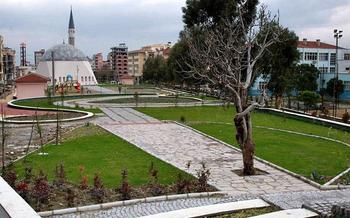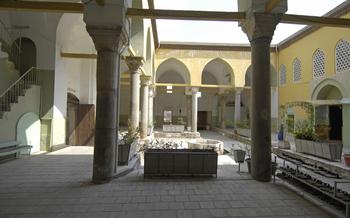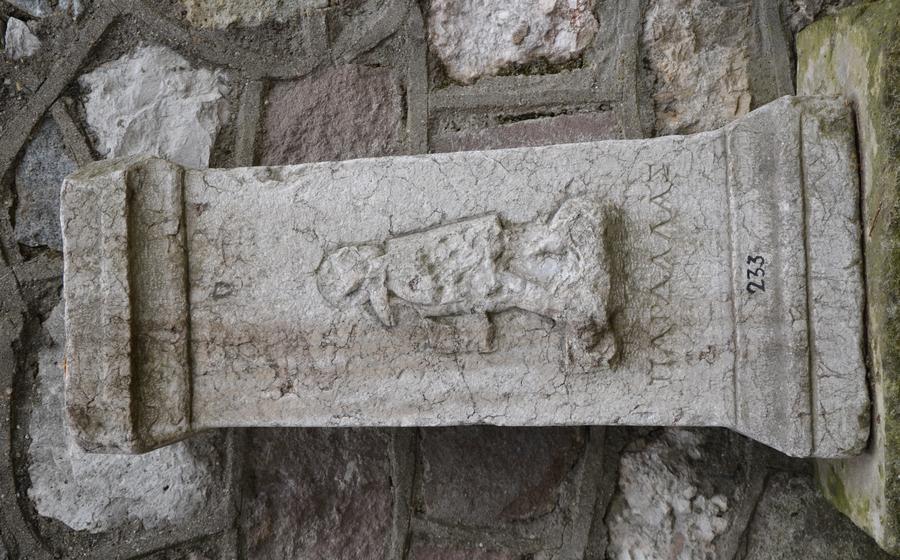
Manisa Mesir Festival (annual event)
- History of the Manisa Mesir Festival
- Mesir Paste: The Star of the Show
- Preparation of the Mesir Paste: A Delicate Art
- The Festival Procession: A Visual Spectacle
- Mesir Distribution: A Symbol of Generosity
- Folkloric Performances and Traditional Music
- Street Vendors and Local Delights
- Cultural Exhibitions and Displays
- Interactive Workshops and Activities
- Tips for Choosing the Right Workshops and Activities
- Family-Friendly Festivities
- Shopping for Souvenirs and Local Products
- Photography Opportunities
- Exploring Manisa Beyond the Festival
- Accommodation and Transportation
- Insider Tip: Unveiling the Hidden Gems of the Manisa Mesir Festival
History of the Manisa Mesir Festival
The Manisa Mesir Festival, a vibrant celebration rooted in Ottoman traditions, traces its origins back to the 15th century. Legend has it that the festival was initiated by Sultan Murad II to express his gratitude for the miraculous recovery of his son, Şehzade Ahmet, from a deadly illness. The sultan, deeply moved by the healing powers of a special paste prepared by a wise physician, ordered the distribution of this paste to the people of Manisa. Thus, the annual tradition of the Mesir Festival was born, symbolizing healing, generosity, and community spirit.
Over the centuries, the festival evolved into a grand spectacle, showcasing the rich cultural heritage of Manisa. It became a platform for artisans to display their skills, merchants to showcase their wares, and performers to share their talents. The festival's reputation grew, attracting visitors from across the region and beyond, eager to partake in this unique blend of history, tradition, and celebration.
Mesir Paste: The Star of the Show
The Manisa Mesir Festival revolves around the unique Mesir paste, a delectable confection with a rich history and cultural significance. This paste is a harmonious blend of 41 different spices, including cinnamon, cloves, nutmeg, and cardamom, expertly combined to create a flavorful and aromatic treat.
The Mesir paste holds a special place in Turkish culture, as it is believed to possess medicinal properties and healing powers. Locals often consume it during the festival to ward off illnesses and maintain good health. Its symbolic value extends beyond its taste and medicinal benefits; the paste represents unity, harmony, and the coming together of different cultures.
The preparation of the Mesir paste is a traditional and meticulous process that has been passed down through generations. Local craftsmen, known as "mesir masters," gather the finest ingredients and follow ancient recipes to create this culinary masterpiece. The process involves grinding the spices into a fine powder, mixing them with honey, and then shaping the paste into small, bite-sized pieces.
The health benefits of the Mesir paste are attributed to its carefully selected ingredients. Spices like cinnamon and cloves have antioxidant and anti-inflammatory properties, while nutmeg and cardamom aid in digestion and improve overall well-being. To ensure the quality and safety of the paste, strict quality control measures are in place, guaranteeing its freshness and adherence to traditional recipes.
Preparation of the Mesir Paste: A Delicate Art
The preparation of the Mesir paste is a traditional and intricate process that has been passed down from generation to generation. It involves a unique blend of 41 different spices, each carefully selected for its medicinal properties and symbolic value. The process begins with the grinding of the spices into a fine powder using traditional stone mills. The powdered spices are then mixed with honey, molasses, and other natural ingredients to create a smooth and aromatic paste.
Local craftsmen known as "Mesir Masters" play a crucial role in creating the paste. These skilled artisans possess a deep understanding of the ingredients and the traditional techniques involved in its preparation. The process requires patience, precision, and a keen attention to detail, as each batch of paste is handcrafted with love and dedication.
The Mesir paste is not just a culinary delight; it is also believed to possess healing properties. It is often used in traditional Turkish medicine to treat a variety of ailments, including digestive problems, headaches, and fatigue. The unique blend of spices, each with its own medicinal qualities, contributes to the paste's reputation as a natural remedy.
To ensure the paste's quality and effectiveness, strict health and safety standards are followed during its production. Regular inspections and laboratory testing are conducted to verify its safety and purity. This commitment to quality ensures that the Mesir paste remains a trusted and beloved remedy, cherished by generations of Turks.
The Festival Procession: A Visual Spectacle
The Manisa Mesir Festival is renowned for its elaborate parade, a visual feast that captivates the senses. As the sun casts a warm glow over the city, the streets transform into a vibrant tapestry of colors, sounds, and movement. Floats adorned with intricate designs and vibrant hues glide gracefully along the route, accompanied by lively music and energetic performers.
Each float tells a unique story, showcasing scenes from Turkish history, mythology, and folklore. Dancers in colorful costumes twirl and sway to the rhythm of traditional melodies, while musicians fill the air with enchanting tunes. The procession is a testament to the creativity and artistry of the local community, who work tirelessly to bring these magnificent floats to life.
The symbolism and storytelling elements woven into the parade add a deeper layer of meaning to the festival. Spectators are transported to a realm of magic and wonder as they witness tales of heroism, love, and adventure unfolding before their eyes. The parade also serves as a reminder of Manisa's rich cultural heritage and the enduring spirit of the Turkish people.
As the procession winds its way through the city, it draws in both locals and visitors, creating a sense of unity and camaraderie. The parade is more than just a spectacle; it is a celebration of Turkish culture, tradition, and the enduring legacy of the Manisa Mesir Festival.
Mesir Distribution: A Symbol of Generosity
One of the highlights of the Manisa Mesir Festival is the free distribution of the Mesir paste to attendees. This tradition dates back to the festival's origins when the paste was distributed among the poor and needy as a symbol of generosity and compassion. Today, the practice continues as a way to share the blessings and prosperity associated with the festival with everyone.
During the festival, large cauldrons of freshly prepared Mesir paste are set up at various locations throughout the city. Attendees can approach these cauldrons and receive a small portion of the paste, usually wrapped in a piece of paper or a small bag. This symbolic gesture represents the belief that sharing the Mesir paste brings good luck, health, and blessings to all who partake in it.
The distribution of the Mesir paste also fosters a sense of community bonding and unity among attendees. As people line up to receive their share of the paste, they engage in friendly conversations and exchange well wishes, creating a warm and convivial atmosphere. This simple act of sharing becomes a powerful symbol of generosity, compassion, and the shared cultural heritage that unites the people of Manisa and beyond.
Folkloric Performances and Traditional Music
The Manisa Mesir Festival is not just about the Mesir paste; it's also a celebration of Turkish culture and traditions through lively folkloric performances and traditional music. The streets come alive with the rhythmic beats of drums, the melodies of traditional instruments like the bağlama and ney, and the enchanting voices of singers belting out soulful Turkish folk songs.
Dance troupes showcase the vibrant diversity of Turkish folk dances, from the energetic zeybek to the graceful halay. Their colorful costumes, intricate steps, and infectious energy captivate the audience, drawing them into the joyous atmosphere of the festival. These performances not only entertain but also provide a glimpse into the rich cultural heritage of Turkey, connecting visitors with the country's deep-rooted traditions.
The festival stage becomes a platform for local musicians and artists to showcase their talent, creating a unique blend of traditional and contemporary sounds. Whether it's the soulful melodies of Anatolian folk music or the upbeat rhythms of modern Turkish pop, there's something for everyone to enjoy. The energetic atmosphere and infectious beats encourage audience participation, turning the festival grounds into a dance floor where visitors can let loose and celebrate the joy of life.
Street Vendors and Local Delights
The Manisa Mesir Festival is a feast not just for the soul but also for the taste buds. The streets surrounding the festival grounds transform into a vibrant marketplace, teeming with stalls selling an array of traditional Turkish food, souvenirs, and handicrafts.
Indulge in the delectable aromas of freshly grilled kebabs, crispy gözleme, and sweet Turkish delights. Sample the local specialty, Manisa kebabı, a succulent skewer of marinated lamb grilled to perfection. Refresh your palate with a glass of tangy ayran or savor a cup of aromatic Turkish coffee.
Stalls laden with colorful carpets, intricate ceramics, and hand-woven textiles provide an opportunity to support local artisans and take home unique souvenirs. Haggling is not only acceptable but expected, so don't be afraid to bargain for the best prices.
Immerse yourself in the festival's lively atmosphere, soak in the sights and sounds, and let the vibrant energy of this cultural extravaganza wash over you.
Cultural Exhibitions and Displays
The Manisa Mesir Festival is not just about the Mesir paste and the parade. It also offers a glimpse into the rich cultural heritage of Manisa through various exhibitions and displays. Visitors can delve into the intricacies of traditional Turkish arts, crafts, and customs, gaining a deeper understanding of the region's diverse cultural tapestry.
Interactive exhibits and demonstrations allow visitors to engage with the local culture firsthand. Learn the art of intricate henna painting, discover the secrets behind Turkish coffee making, or try your hand at traditional weaving techniques. These interactive experiences provide a unique opportunity to connect with the local artisans and gain insights into their skills and techniques.
Cultural exhibitions showcase a range of traditional Turkish crafts, from hand-woven carpets and intricate pottery to delicate embroidery and ornate jewelry. These displays not only showcase the artistry and craftsmanship of local artisans but also provide a glimpse into the region's rich history and traditions. Visitors can marvel at the vibrant colors, intricate designs, and meticulous attention to detail that characterize these handmade creations.
Whether you're a culture enthusiast, a history buff, or simply someone looking for a unique and immersive experience, the cultural exhibitions and displays at the Manisa Mesir Festival offer a captivating journey into the heart of Turkish culture.
Interactive Workshops and Activities
The Manisa Mesir Festival offers an array of interactive workshops and activities that allow visitors to delve into the local culture and learn traditional skills. From intricate henna painting to the art of making Turkish coffee, these hands-on experiences provide a unique opportunity to connect with the vibrant traditions of Manisa.
Henna painting, with its beautiful designs and symbolic significance, is a popular activity at the festival. Skilled henna artists guide participants in creating intricate patterns on their hands and arms, transforming them into temporary works of art.
Turkish coffee making is another highlight, with workshops teaching the art of preparing this rich, frothy beverage. Participants learn the precise techniques of grinding, brewing, and presenting Turkish coffee, creating a sensory experience that captures the essence of Turkish hospitality.
Beyond these popular crafts, visitors can explore other workshops showcasing traditional arts and crafts, such as pottery, weaving, and woodworking. These interactive sessions provide a deeper understanding of Turkish artisanship and the skills that have been passed down through generations.
Tips for Choosing the Right Workshops and Activities
Explore Your Interests: With a diverse range of workshops available, take time to explore your interests and choose activities that align with your passions. Whether it's henna painting, coffee making, or traditional crafts, select workshops that resonate with your curiosity.
Consider Skill Level: Some workshops may require prior experience or a certain skill level. If you're a beginner, opt for workshops that offer basic instruction and guidance to ensure a smooth learning experience.
Check Workshop Schedule: Workshops often have limited slots and specific schedules. Plan your festival itinerary in advance and check the workshop schedules to avoid disappointment.
Embrace the Experience: The workshops are not just about learning skills; they're about immersing yourself in the local culture. Embrace the experience, ask questions, and engage with the instructors and fellow participants.
Family-Friendly Festivities
The Manisa Mesir Festival is a joyous occasion that welcomes families with open arms. Dedicated areas are set up for children, featuring an array of games, rides, and entertainment that will keep them enthralled throughout the festival. Safety and inclusivity are paramount, ensuring that families can enjoy the festivities together without any worries.
To make the most of your family experience, consider planning a family-friendly itinerary. Start by identifying the activities that your children would enjoy the most. Whether it's face painting, henna art, or traditional games, there's something for every child to discover.
The festival also offers opportunities for families to bond and create lasting memories. Join in on the traditional dances, participate in interactive workshops, or simply savor the delicious Turkish cuisine together. These shared experiences will undoubtedly strengthen your family ties and leave you with cherished memories.
Shopping for Souvenirs and Local Products
The Manisa Mesir Festival is a treasure trove for souvenir hunters and those seeking unique local products. Stalls line the festival grounds, showcasing an array of handmade crafts, textiles, and local delicacies that capture the essence of Turkish culture.
From intricately woven carpets and vibrant kilims to delicate pottery and gleaming copperware, the festival offers a kaleidoscope of traditional Turkish handicrafts. Skilled artisans display their mastery, creating one-of-a-kind pieces that celebrate centuries-old techniques.
Indulge in the flavors of Manisa by sampling the delectable local delicacies on offer. From sweet Turkish delight and flaky baklava to savory börek and gözleme, the festival is a culinary adventure waiting to be explored.
Don't miss the opportunity to haggle with the friendly vendors, a cherished Turkish tradition. Engage in the lively banter and test your negotiation skills to secure the best deals on your chosen treasures.
By supporting local artisans and purchasing their handmade goods, you not only take home a piece of Turkish culture but also contribute to the preservation of traditional crafts and the local economy.
Photography Opportunities
The Manisa Mesir Festival is a visual feast, offering endless opportunities for photographers to capture the vibrant colors, intricate details, and lively atmosphere. From the elaborate costumes of the parade participants to the colorful displays of Mesir paste, every corner of the festival is a potential canvas for stunning photographs.
Tips for Capturing the Essence of the Festival:
-
Be prepared: Come equipped with a good camera, extra batteries, and memory cards to ensure you don't miss a shot.
-
Timing is everything: Arrive early to witness the parade in its full glory and to capture the morning light as it illuminates the festival grounds.
-
Experiment with angles: Don't just stick to eye-level shots. Try shooting from different perspectives, such as above the crowd or from a low angle, to create more dynamic images.
-
Look for details: Pay attention to the intricate details of the costumes, the expressions on people's faces, and the interactions between festival attendees. These details can often make for the most compelling photographs.
-
Be patient: The festival is a whirlwind of activity, but don't be afraid to slow down and observe the quieter moments. Sometimes, the most captivating images are found in the small, intimate interactions that take place on the sidelines.
Exploring Manisa Beyond the Festival
While the Manisa Mesir Festival is the main attraction, Manisa offers a wealth of other captivating experiences for visitors to discover. Delve into the city's rich history at the Manisa Museum, housing a treasure trove of artifacts from the region's past. Marvel at the architectural grandeur of the Kurşunlu Mosque, a stunning example of Ottoman architecture. Nature enthusiasts can embark on a scenic hike to Spil Mountain, offering breathtaking panoramic views of the surrounding landscape.
For a unique cultural experience, visit the Manisa Grape Festival, held annually in September, celebrating the region's renowned grape harvest. Indulge in delectable grape-based delicacies, witness traditional grape-stomping competitions, and immerse yourself in the lively atmosphere of this vibrant festival. Manisa is also home to several thermal springs, offering a chance to relax and rejuvenate in the healing waters. Pamukkale, a nearby natural wonder, features cascading travertine terraces and hot springs, a must-see for any visitor to the region.
Accommodation and Transportation
Finding suitable accommodation in Manisa during the festival is crucial, as the city welcomes a large number of visitors. Consider booking your stay in advance to avoid any last-minute surprises. There are various options available, ranging from budget-friendly hostels to comfortable hotels and luxurious resorts. To immerse yourself fully in the festival atmosphere, opt for a hotel near the festival grounds.
Transportation to and around Manisa is relatively straightforward. The city is well-connected by air, with direct flights from major destinations. Once in Manisa, you can easily navigate the city using public transportation or taxis. During the festival, there are often special shuttle services arranged to transport attendees between the festival grounds and various parts of the city.
To secure the best deals on accommodation and transportation, it's advisable to book early, especially if you're traveling during the peak season. Keep an eye out for online discounts and special offers, which can help you save money on your travel expenses. Insider tip: consider exploring nearby cities like Izmir or Bursa for alternative accommodation options, which may offer a wider range of choices and lower prices.
Insider Tip: Unveiling the Hidden Gems of the Manisa Mesir Festival
While the Manisa Mesir Festival offers an abundance of excitement and spectacle, it's equally rewarding to venture off the beaten path and discover its hidden gems. To escape the throngs of visitors and immerse yourself in tranquility, seek refuge in the serene gardens of the Kurşunlu Mosque. This architectural marvel, nestled in the heart of the city, offers a tranquil oasis amidst the festival's vibrant energy.
For a culinary adventure, venture beyond the festival grounds and explore the local eateries that proudly showcase authentic Turkish cuisine. Indulge in the flavors of freshly grilled kebabs, tantalizing pide (Turkish flatbread), and the renowned Manisa kebabı, a succulent lamb dish that embodies the region's culinary traditions.
To experience the festival like a local, embrace the opportunity to engage with the friendly residents of Manisa. Engage in conversations, share stories, and immerse yourself in their warm hospitality. By embracing the local culture and customs, you'll gain a deeper understanding of the festival's significance and create lasting memories that extend beyond the festivities.
